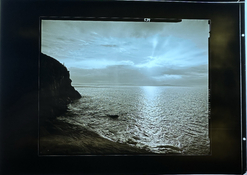df cardwell
Subscriber
"Why am I interested in "00" performance of MG paper???"
To imitate paper response of platinum or Azo using multigrade paper
To improve the aesthetics of long tonal range negatives
Forgive me is this has already been covered,
but developer choice makes a significant difference in the response of paper
(although it has been poo-pooed by writers over the past 30 years,
anxious to defend variable contrast paper).
The conventional alternative to Dektol is Selectol-Soft (120) and so most of us are usually working with metol and metol/HQ developers.
LPD is a very different developer, which, with long scale negatives, can produce rich blacks and a longer range of light grays and whites. In my darkroom, it adds 2 zones to unfiltered MGIV over Dektol, between Zone V and Zone IX. A bit like a platinum response. A bit... depending on what the specific platinum process is doing for you.)
A glycin/carbonate developer (no metol, no HQ) makes an even longer transition from white to black, while producing strong paper blacks (unlike 120). Rodinal does the same thing, and Catechol, although glycin/carbonate is easier (I think) to work with. Sulfite/Glycin/Carbonate, pretty simple.
You can emulate a platinum palette on MG IV with TMY2 and a glycin/carbonate/sulfite paper developer.
I use TMY2 most of the time, for everything, and prefer to give normal development as much as possible. For me, it is easier to adjust the paper developer, and normal paper. Variable Filters and SLIMT are both in my toolbox for cases when long scale developers need some help.
Good luck.
To imitate paper response of platinum or Azo using multigrade paper
To improve the aesthetics of long tonal range negatives
Forgive me is this has already been covered,
but developer choice makes a significant difference in the response of paper
(although it has been poo-pooed by writers over the past 30 years,
anxious to defend variable contrast paper).
The conventional alternative to Dektol is Selectol-Soft (120) and so most of us are usually working with metol and metol/HQ developers.
LPD is a very different developer, which, with long scale negatives, can produce rich blacks and a longer range of light grays and whites. In my darkroom, it adds 2 zones to unfiltered MGIV over Dektol, between Zone V and Zone IX. A bit like a platinum response. A bit... depending on what the specific platinum process is doing for you.)
A glycin/carbonate developer (no metol, no HQ) makes an even longer transition from white to black, while producing strong paper blacks (unlike 120). Rodinal does the same thing, and Catechol, although glycin/carbonate is easier (I think) to work with. Sulfite/Glycin/Carbonate, pretty simple.
You can emulate a platinum palette on MG IV with TMY2 and a glycin/carbonate/sulfite paper developer.
I use TMY2 most of the time, for everything, and prefer to give normal development as much as possible. For me, it is easier to adjust the paper developer, and normal paper. Variable Filters and SLIMT are both in my toolbox for cases when long scale developers need some help.
Good luck.
Last edited by a moderator:







 )
)
